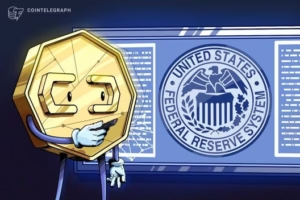Despite a recent 2.2% gain on April 1, Bitcoin (BTC) has faced significant price challenges, remaining below the $89,000 mark since early March. While many traders have attributed BTC’s year-to-date weakness to the escalating US-led tariff war, a deeper analysis reveals multiple contributing factors that have impacted investor sentiment long before the start of these trade tensions.
A crucial point to note is that Bitcoin has not been able to maintain prices above $100,000 for approximately three months. This weakness existed independently of the tariffs initiated by President Trump on January 21, which suggests that other underlying issues have been influencing Bitcoin’s performance. Interestingly, some market participants are highlighting Strategy’s mammoth $5.25 billion Bitcoin purchases as a reason BTC has remained above the $80,000 support level, but these purchases are not the only narrative at play.
Spot Bitcoin ETFs and Inflationary Trends
The link between tariffs and Bitcoin’s price has been further weakened by the behavior of spot Bitcoin exchange-traded funds (ETFs), experiencing net inflows of $2.75 billion shortly after the trade war began. Institutional demand for Bitcoin has been high, as many investors continue to see value in BTC, contrasting the narrative that tariffs are solely to blame for its price decreases.
Additionally, inflation trends are a key influencing factor on Bitcoin prices. Recent reports indicate a year-over-year increase in the US Personal Consumption Expenditures (PCE) Price Index by 2.5%, while the eurozone Consumer Price Index (CPI) rose by 2.2%. These inflationary figures suggest that the economic backdrop hasn’t been favorable for Bitcoin in its pursuit of higher valuations.
The Shift to Risk Aversion
The current economic landscape exhibits a growing risk aversion among investors, particularly following weaker job market data. Job openings are at a four-year low, as reported by the US Labor Department, and this decline in job opportunities has made traders more cautious about risk-on assets like Bitcoin. Moreover, yields on US 2-year Treasury notes, which have dropped to a six-month low, indicate a wider trend towards safer investments.
This overall shift in attitude among traders has created a challenging environment for Bitcoin, particularly as interest rates are projected to stay lower. Investors seem to prefer lower-risk assets, which could hinder Bitcoin’s price recovery in the near term. If inflation continues to stabilize, interest rate cuts may encourage investments in real estate and stocks over cryptocurrencies.
In conclusion, while the US-led tariff war certainly contributes to Bitcoin’s challenges, factors such as unrealistic expectations surrounding Bitcoin government reserves, decreasing inflation, and a risk-averse economic environment play a more significant role. The existing weaknesses in Bitcoin’s market performance reveal that even before the tariff discussions, the cryptocurrency was already navigating through turbulent waters.



